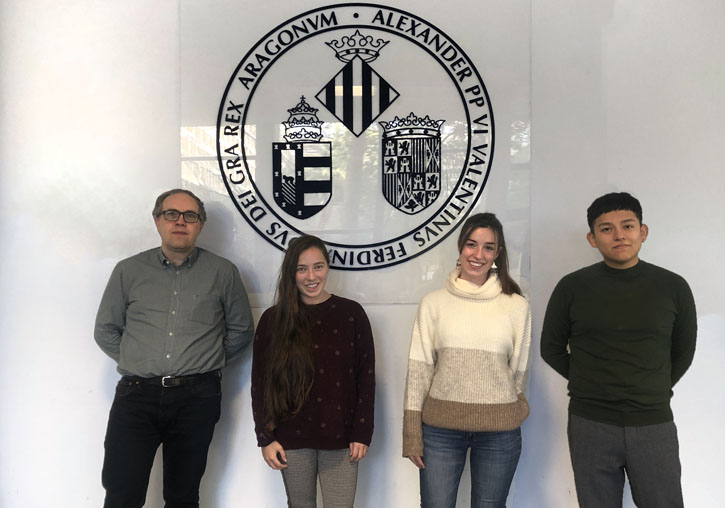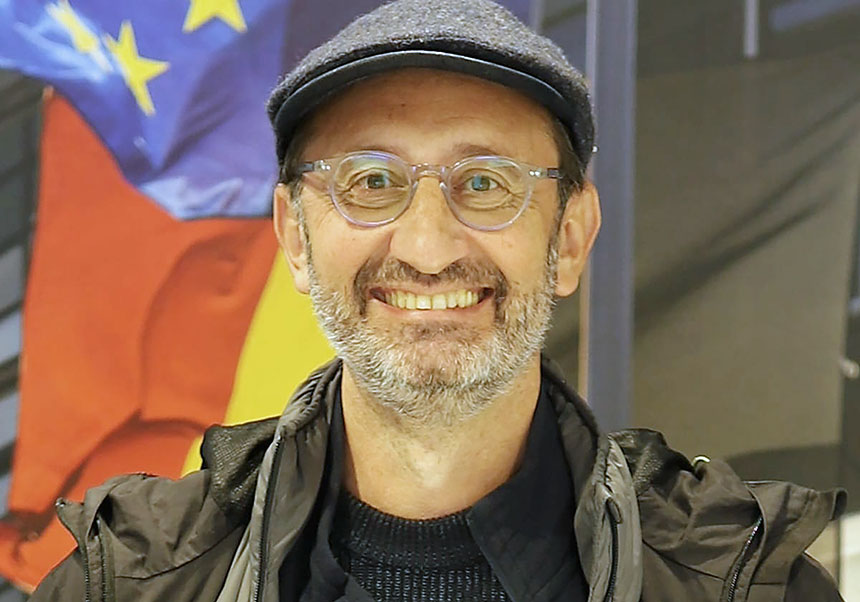A study of the University of Valencia reveals how difficult it is to identify fake logos
- Press Office
- February 11th, 2021

A study carried out by researchers from the University of Valencia and the Antonio de Nebrija University ("Does the cowl make the monk? Detecting counterfeits in brand names versus logos") has proven that logos are not processed in the same way as common words. The study, which was published in the "Psychonomic Bulletin & Review" journal, reveals that fake logos can be easily mistaken for real ones, since they are perceived in a more holistic manner.
Logos are very present in our daily lives. Just by looking around we can see distinctive images of companies and products, such as on the screen where these words appear. Although the origin of logos goes back to the marking of animals in the Neolithic, their expansion began during the Industrial Revolution, when companies started to use them to set themselves apart from their potential competitors.
As images of an entity or product, logos have an implicit value: they are quality indices. It is no surprise, then, that competing products use a similar name or logo to that of the more prestigious brand in an attempt to sell more. “This made us question a couple of things: what are the elements of logos that make them susceptible to copying and counterfeiting? Is it just the brand name? Or is it the typography and other graphic elements such as the colour and design of the logo?”, stated Ana Marcet, professor of the Faculty of Teacher Training and co-researcher of the study.
For the study experiments, researchers created different “fake” logos of well-known trademarks. The resulting logos were created by: 1) transposing two internal letters of a trademark (e.g. Amzaon) or 2) replacing those two letters with others (e.g. Amceon). In other words, they created “misspelled” trademarks. These items, as well as the original trademark spelled correctly, were presented to the participants in different ways: 1) with the complete logo; 2) with the graphic elements of the logo, but changing the typography; 3) with the logo typography, without graphic elements; or 4) with the plain logo.
The participants’ job was simply to decide if the trademark they were seeing was misspelled or not. Results showed that misspelled brands were spotted faster when they were unformatted or had the wrong typography, despite retaining the graphic elements, than when they only kept the typography without graphic elements. In fact, the last condition behaves similarly to the full logo.
“These findings show how important typography is in a logo. Take the example of Coke, whose logo can be identified even by pre-readers due to its distinctive typography. The children can’t read yet, but they connect the typography to the brand name they have heard so often”, added Ana Baciero, a researcher from the Nebrija University.
We believe that “our studies are not only useful to understand how we recognise logos, but also to learn how to design them effectively and give advice in those cases when we need to decide whether a brand is too similar to another”, explained Manuel Perea and Fran Rocabado, co-authors of the study.
Manuel Perea is a full professor from the Department of Behavioural Sciences Methodology and the ERI-Lectura in the University of Valencia. He is an expert in the field of reading, having published over 200 international articles, and has been a visiting researcher in the Massachusetts Institute of Technology, Northwestern University, University of Massachusetts, University of Arizona, among other institutions.
Ana Baciero is a pre-doctoral researcher in a joint programme between Antonio de Nebrija University of Madrid and DePaul University of Chicago and she carries out her work at the University of Valencia. Her research focuses on Braille reading and tactile perception, as well as methodological issues and visual information processing.
Fran Rocabado is a pre-doctoral co-researcher from the Nebrija University of Madrid. He specialises in the use of virtual reality as a learning tool and how it can affect cognitive processes.
Ana Marcet is a professor from the Department of Language and Literature Teaching of the Faculty of Teacher Training in the University of Valencia. She has published a wide range of international articles on learning how to read and reading processes in different populations. She received the Extraordinary Doctoral Award in the last call of the University of Valencia.
Pictures: click here for a Creative Commons example of a real counterfeit trademark.















